- 32 vistas

Por Ramiro Varela Marmolejo
Presidente del Comité Organizador Campeonato Mundial de Atletismo Sub20 Cali 2022 y Sub18 Cali 2015 y Presidente de la Federación Colombiana de Atletismo 2010-2022.
Cali, May 17, 2023
Mr. HELIO GESTA DE MELO - President of South American Athletics, council, presidents and executives
of the 13 National Athletics Federations.Bogota
Subject: Assembly of South American athletics in Bogotá on Monday, May 22, 2023
In my capacity as manager of athletics in my city and region, I present to you and to the athletic-sports community this evaluation (2 documents), which contains an evaluation of these 30 years of the period started by Roberto Gesta de Melo in Lima in 1993 and continued in Doha by Helio Gesta de Melo in 2019, for the South American athletics of the 30 years of CONSUDATLE, according to his participation in the World Athletics Championships.
Next Monday Helio Gesta de Melo is re-elected in Bogotá and in practice, begins a new 4-year term as President, an important opportunity to project the necessary transformation of athletics, of Consudatle and its 13 countries (federations); I said the same thing 4 years ago in Doha and 8 years ago in Manaus, so it is the moment to think, evaluate, make decisions and start the necessary evolution of South American athletics.
The South American Podium in 30 years in World Championships ( World Athletics Information )
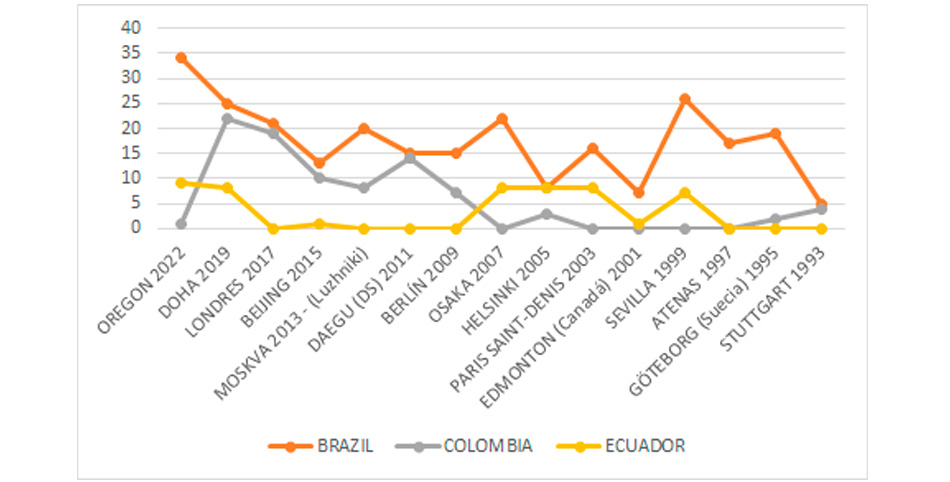
Brazil, Colombia and Ecuador: Brazil has won in all 30 years and in each of the world competitions (1993/2023), being in 24th place with 263 points, followed by Colombia in 44th place with 90 points and closing the podium Ecuador in 58th place with 50 points. ( See attached table of the 131 countries that obtained points in the 30 years of this study )
They are followed by Venezuela in 71st place with 33 points, Panama in 75th place with 22 points, Peru in 85th place with 18 points, Suriname in 86th place with 18 points, Chile in 124th place with 3 points and Argentina in 125th place with 3 points. ( 5 countries do not achieve score )
These places of South American athletics are similar to the positions obtained by the South American continent in education, bilingualism, GDP and GDP per capita.
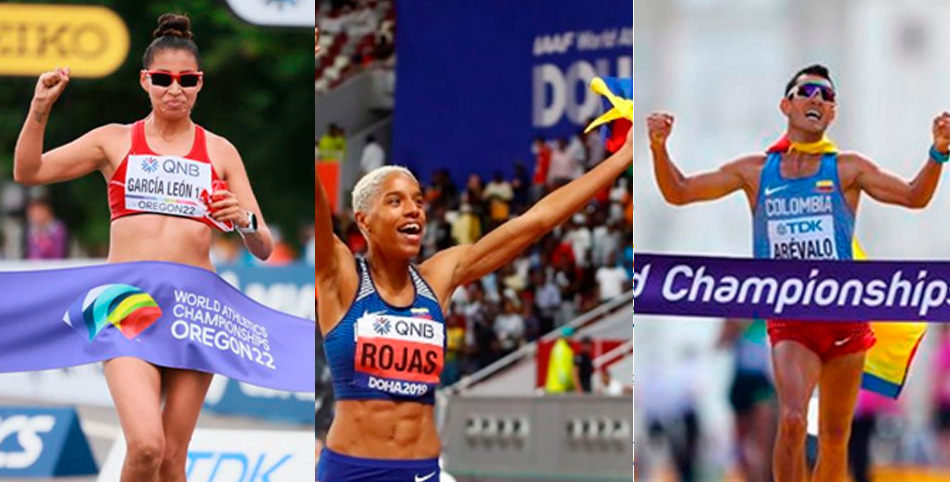

Points Table of South American athletics 30 years in points
Score graph in 30 years of South American athletics of the 9 countries
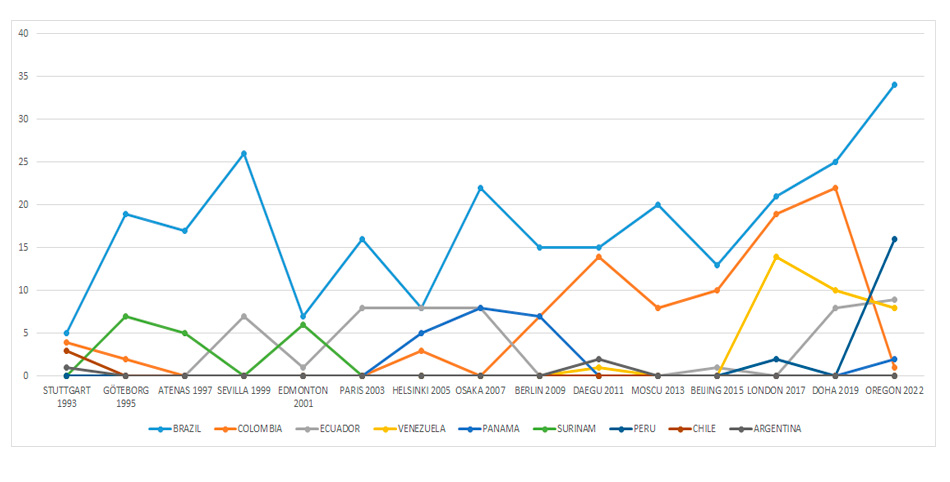
SCORES IN WORLD CHAMPIONSHIPS OVER LAST 30 YEARS
Top 10 FINISHES

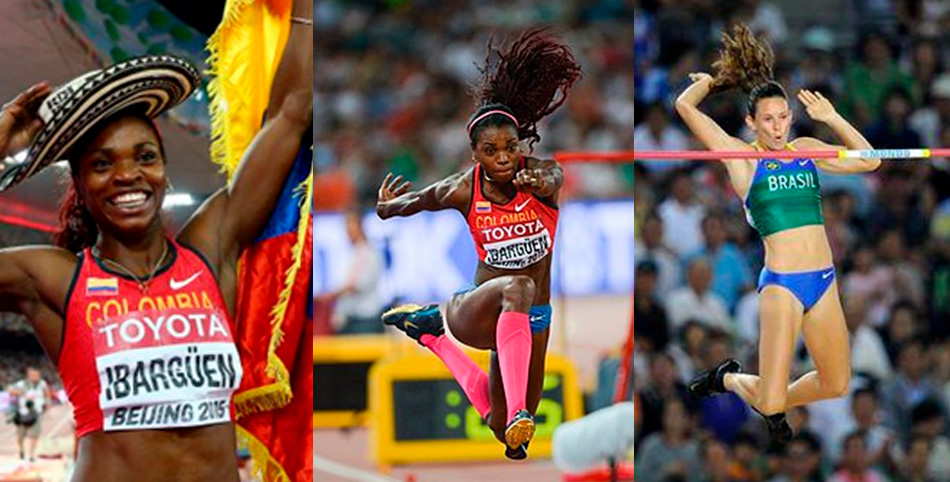
POINTS IN WORLD CHAMPIONSHIPS OVER LAST 30 YEARS
11 - 20th Finishes


POINTS IN WORLD CHAMPIONSHIPS OVER LAST 30 YEARS
21 - 30th Finishes

ATHLETICS IN WORLD CHAMPIONSHIPS / countries OVER 30 YEARS
By score (132 countries)
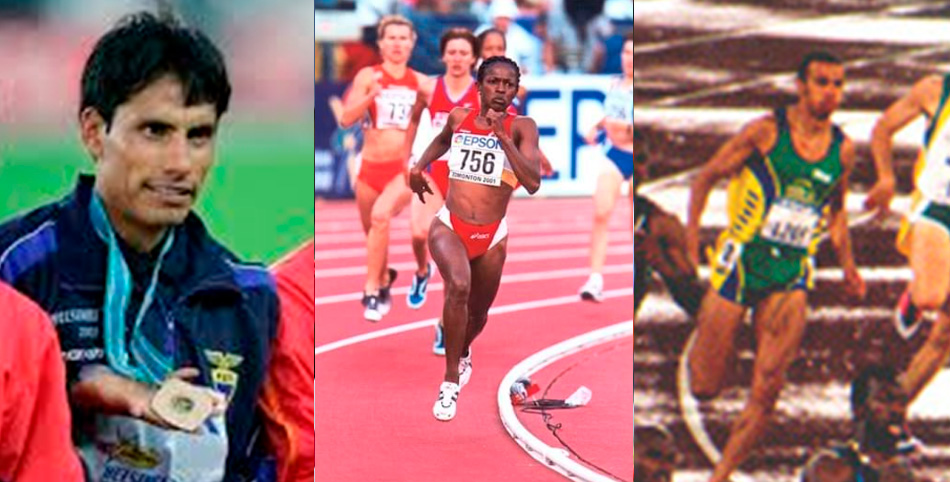
SOUTH AMERICAN MEDAL WORLD CHAMPIONSHIPS 1993 - 2023

SCORES IN WORLD CHAMPIONSHIPS OVER 30 years
Jamaica - Cuba - Spain - South America

Jamaica, Cuba and Spain are benchmark countries for South America, with scores higher than a continent as large as South America, with 440 million inhabitants, with development, science, technology, breeds and biotypes, which has improved in recent years.
COMPARATIVE GRAPH
Jamaica - Cuba - Spain - South America
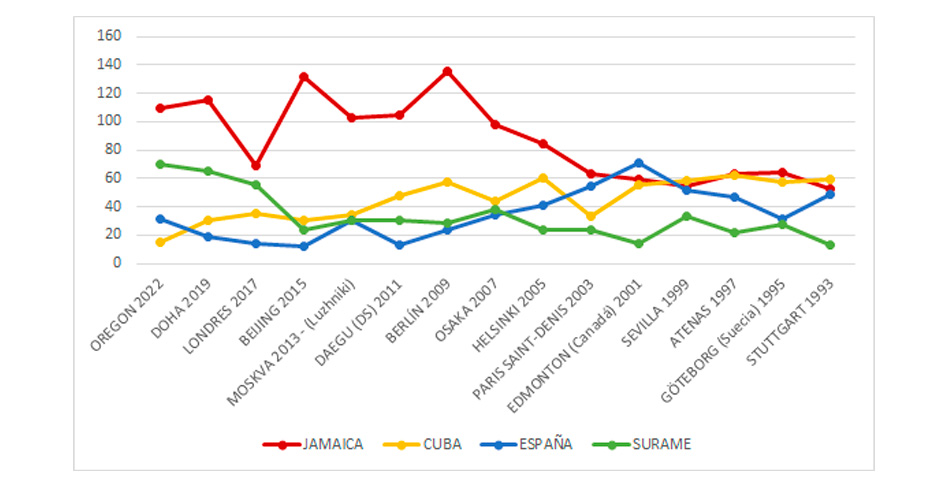
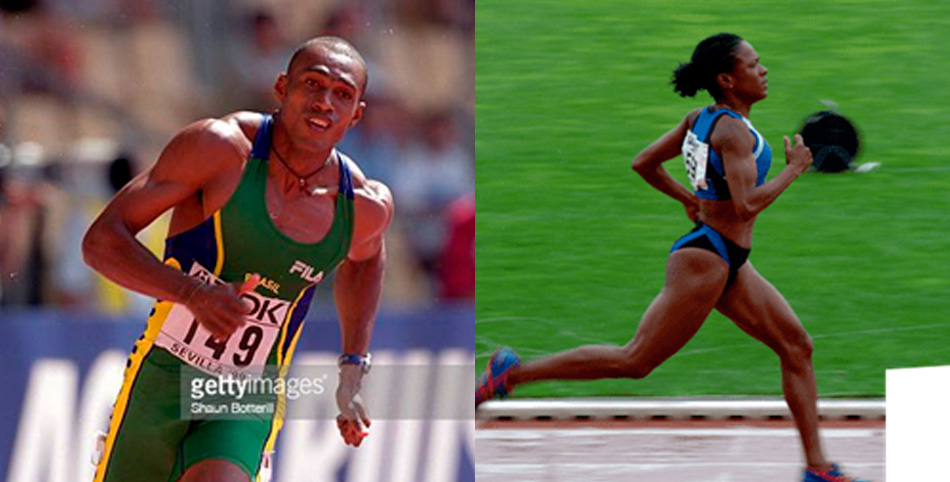
LAST CONCLUSIONS TO SOUTH AMERICAN ATHLETICS
1. It grows in competitiveness (brands), it does not grow in competitions, nor in athletes on the track, that is, in 2023, South American athletics is not massive
2. The commercialization and income of athletics in Consudatle and the national Federations is non-existent or very low, unlike many countries of NACAC, EUROPE, ASIA, AFRICA AND OCEANIA.
3. The development of South American athletics and the national federations in the U20, U18, U16, U14 categories... is low, there is no competitive university and school athletics
4. The preparation of qualified coaches who continue in sports athletics processes is very low. For example, countries that present 2,000 coaches in their intercollegiate championships, with a World Athletics rating of less than 15% (Less than 300).
5. The more than 70 South American athletics stadiums are empty in their events, there are no fans, there is no marketing, there are no sponsors and there is no athletics business.
FINAL RECOMMENDATIONS TO SOUTH AMERICAN ATHLETICS
1. You must have an athletic / sports project in the South American area to continue growing on your upward curve, World and Olympic level, supported by the NOCs and sports ministries.
2. South American athletics, one way or another, must have a marketing and publicity plan, so that with that money they can be invested in new competitions, in cities whose marketing is attractive. (See the example of the marathons that leave money to the organizers and national federations)
3, The Development Center of the South American area (Proposal to World Athletics), must be acted on:
- To the National Federations whose countries can set up with their universities the level I, II and III coaching training with the digital monitoring of World Athletics, to improve and massify, plus global and bilingual integration.
4. The Development Center of the South American area should focus on the areas where the national federations are very weak and have no resources:
- Marketing and advertising (Produce money)
- Strategic and digital communications (Inform massively)
- Alliance with technology, music and culture (Produce new public, new market)
See part 1: https://caliescribe.com/index.php/es/13052023-0738/deporte/24313-deport…
Copy: World athletics (President Sebastian Coe, Council, Executive Committee, CEO, commission, areas and development officials, competition, athletes and governance )



